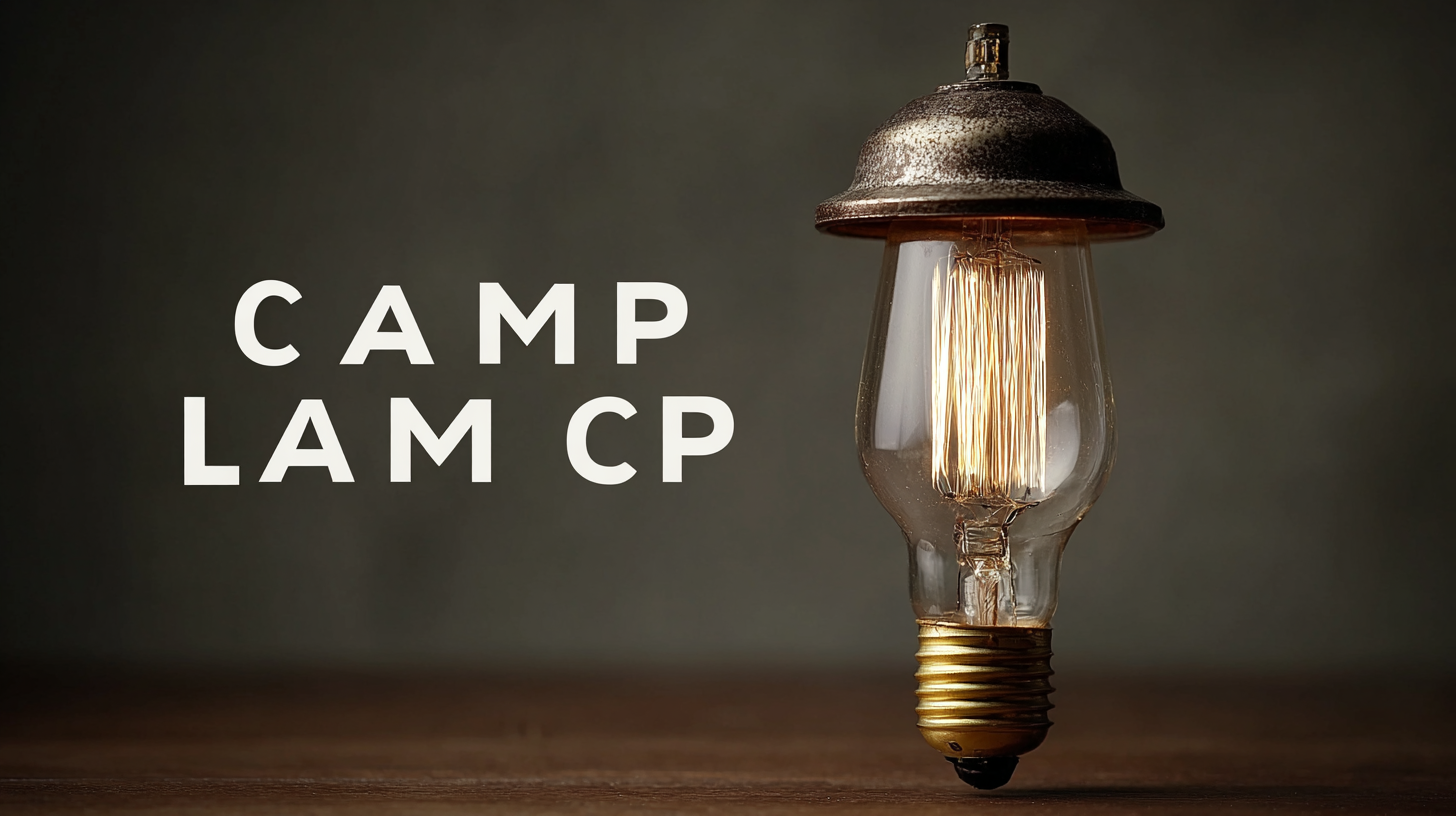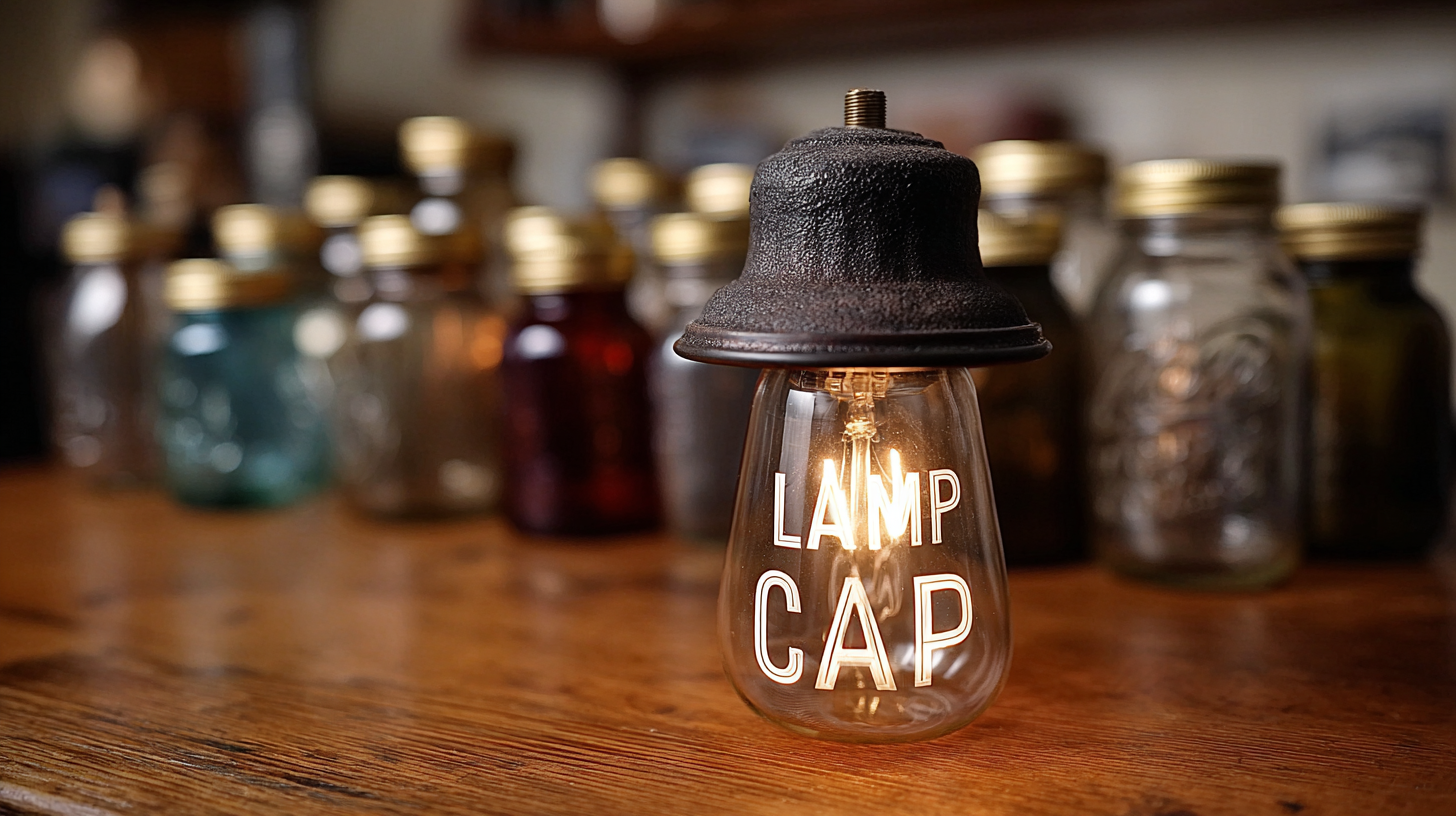Choosing the right lamp cap is crucial to optimizing your lighting solutions, as the wrong choice can lead to inefficiencies and increased energy costs. According to a report by the U.S. Department of Energy, approximately 25% of residential energy consumption is attributed to lighting, highlighting the importance of selecting the correct components for your lighting fixtures.

A well-chosen lamp cap not only enhances the aesthetic appeal of a space but also ensures compatibility with various lamp types and extends the life of your bulbs. With a plethora of options ranging from standard Edison bases to specialized caps designed for energy-efficient lamps, understanding the specifications and applications of different lamp cap types can significantly impact lighting performance and energy savings.
This blog will guide you through the essential technical parameters of lamp caps and how to choose the best one for your specific lighting needs.
When selecting the best lamp cap for your lighting needs, it's essential to understand the various types available and their compatibility with different light fixtures. Lamp caps, also referred to as sockets or bases, come in numerous shapes and sizes, each designed for specific lamps and fixtures. The most common types include Edison screw caps (E26, E27), bayonet caps (B22), and bi-pin caps, which are prevalent in halogen and LED lamps. Choosing the correct type ensures optimal performance and safety in your lighting setup.
Different lighting fixtures, such as table lamps, ceiling fixtures, or sconces, require distinct lamp caps. For instance, if you're looking to replace a bulb in a table lamp, an E26 base is often the standard choice in North America, while E27 is common in Europe. Conversely, for more specialized lighting applications, such as track lighting or under-cabinet fixtures, bi-pin or GU10 bases are frequently used. Understanding these variations allows you to select the right lamp cap that not only fits your fixture but also enhances your lighting experience, ensuring that both aesthetic and functional needs are met.
When choosing the best lamp cap for your lighting needs, several key factors should be considered to ensure you make the right decision for your home. Firstly, the type of bulb you intend to use will greatly influence your choice of lamp cap. Different light bulbs, such as incandescent, CFL, or LED, come with specific socket sizes and types, such as E26, E27, or GU10. It’s essential to match the lamp cap with the bulb type to avoid compatibility issues and ensure optimal performance.
Another critical factor is the aesthetic and functional style of the lamp itself. The design of the lamp cap can significantly impact the overall look of your lighting fixture. Consider whether you prefer a modern, sleek design or something more traditional and ornate. Additionally, think about the wattage and voltage requirements of your home’s electrical system. Ensuring that the lamp cap you choose can handle the appropriate wattage will help prevent overheating and potential safety hazards, providing both functionality and peace of mind in your living space.

When it comes to selecting the right lamp cap for your lighting needs, understanding the various styles available can significantly influence both functionality and aesthetic appeal. The most common lamp cap styles include the Edison screw (E26/E27), the bayonet cap (B22), and the bi-pin base, which are widely used across different lighting applications. According to the International Lighting Industry Association, around 75% of residential lighting fixtures utilize the Edison screw base, underscoring its popularity among consumers for its compatibility and versatility.
Another vital aspect is energy efficiency. A report from the U.S. Department of Energy indicates that switching to LED bulbs with appropriate lamp caps can reduce energy consumption by up to 75% compared to traditional incandescent bulbs. The bi-pin base, often used with LED and halogen bulbs, caters to modern lighting solutions, offering both sleek designs and energy efficiency. By considering the different lamp cap styles and their energy-saving potential, consumers can make informed choices that align with their specific lighting needs while also contributing to environmental sustainability.
Choosing the right lamp cap is essential for ensuring that your bulbs fit securely and function properly. When selecting a lamp cap, the first step is to understand the base type of your light bulbs. Common types include E26, E27, B22, and GU10, each with specific diameter and fitting requirements. Always check the packaging of your bulbs to identify the exact base type, as using the wrong cap can lead to poor electrical connections or even damage.

Another important factor to consider is the wattage and voltage ratings of both the light bulb and the lamp cap. Pairing a high-wattage bulb with a cap not rated for such power can cause overheating and pose safety hazards. Additionally, consider the fixture's design and intended use. For example, if your lamp is frequently adjusted, opt for caps that provide better grip and easy installation. Matching these considerations will ensure not only compatibility but also the longevity and effectiveness of your lighting setup.
When it comes to maintaining the longevity of your lamp caps, regular care and attention can make all the difference. To start, it’s essential to clean your lamp caps periodically. Dust and grime can accumulate over time, impacting both aesthetics and functionality. Use a soft, lint-free cloth for routine cleaning, and for stubborn spots, a mild soapy solution can effectively remove buildup without damaging the material. Always ensure the lamp is switched off and cooled down before cleaning to prevent any accidents.
Another crucial aspect of lamp cap maintenance is checking for signs of wear and tear. Inspect the fit of the cap on the lamp base; a loose cap can lead to poor electrical connections and potential hazards. If you notice any cracks or discoloration, consider replacing the cap to maintain safety and performance. Additionally, using compatible bulbs with appropriate wattage not only enhances lamp performance but also reduces the risk of overheating, further extending the life of your lamp cap. By incorporating these simple maintenance tips into your routine, you can ensure your lamp caps remain functional and stylish for years to come.
| Lamp Cap Type | Usage | Maintenance Tips | Expected Lifespan |
|---|---|---|---|
| E26 | Common household lighting | Clean regularly; avoid overheating | 15 years |
| B22 | Ceiling lights, lamps | Check connection regularly; ensure tight fit | 10 years |
| GU10 | Spotlights, recessed lighting | Replace damaged caps promptly; avoid moisture | 8 years |
| E14 | Chandeliers, small lamps | Dust regularly; do not overload | 12 years |
